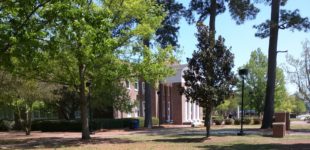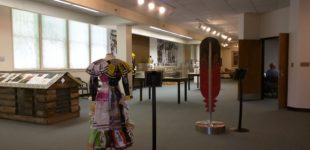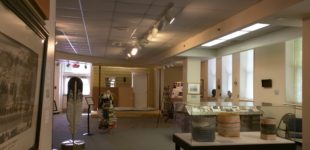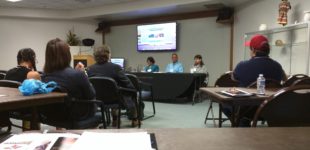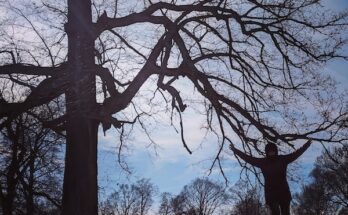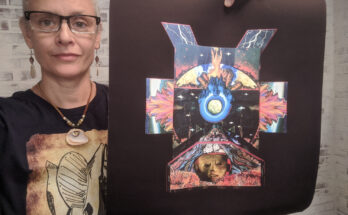UNC-P Southeast Indian Studies Conference
The 14th Annual UNC-P Southeast Indian Studies Conference at UNC Pembroke was on April 12th and 13th this year.
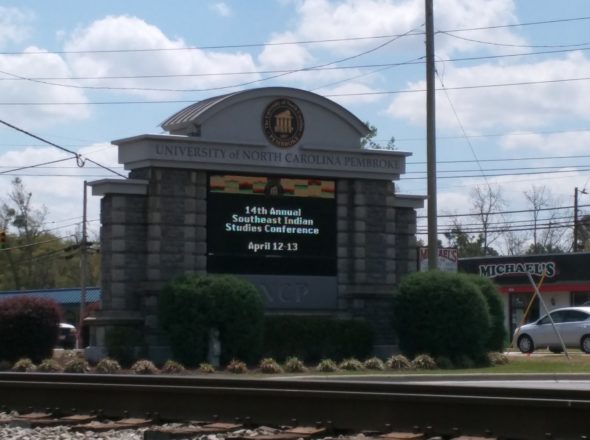
Engaging Speakers and Interesting Topics:
There were some very engaging speakers and interesting topics presented at the UNC-P Southeast Indian Studies Conference, which was housed at the Museum of the Southeast American Indian.
Ryan Emmanuel, Ph.D., Associate Professor and University Faculty Scholar in the Department of Forestry and Environmental Resources at NC State University, talked of environmental degradation and related issues, even shedding light on the emotional impacts of environmental decline and how this relates to environmental justice.
Ulrike Wiethaus, Ph.D. and Professor of Religion and American Ethnic Studies at Temple University, gave an engaging presentation on indigenous stereotypes and modern myths prevalent in American culture.
There were also many very relevant UNC-P student research papers presented at the UNC-P Southeast Indian Studies Conference.
Dreaming of Red and White:
I was part of the poster presentation group, and I presented as an independent artist of Tuscarora/Osage/Saponi tribal affiliation. My poster was titled “The Significance of Red & White in Southeast Indian Art.” My exploration into red and white symbology all started with a dream I had back in 1997 when I first moved to North Carolina and set up my studio. In my dreamer’s eye, an American flag turned strictly red and white as the stars turned red and the blue rectangle faded to white. This left only red stars and stripes against white. At the time I didn’t know what the dream meant, but I knew it was important to my art and our old culture from here.
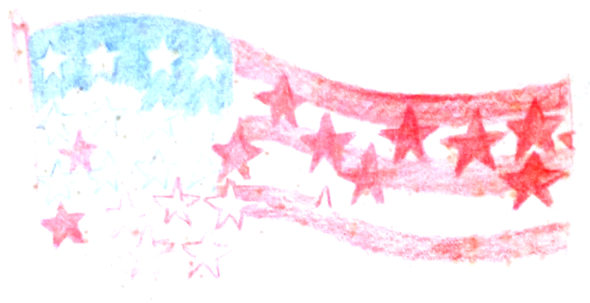
The dream kicked off my exploration into red and white symbology. Over time I was able to tap into its significance, first in my studio practice and later in my graduate research. It popped up here and there in earlier collages and composites, but I first started to consciously address it in my “Ancestral Spaceship” assemblages by painting the back of each sculpture in red and white. This was also a way to tie them all together as a cohesive series.
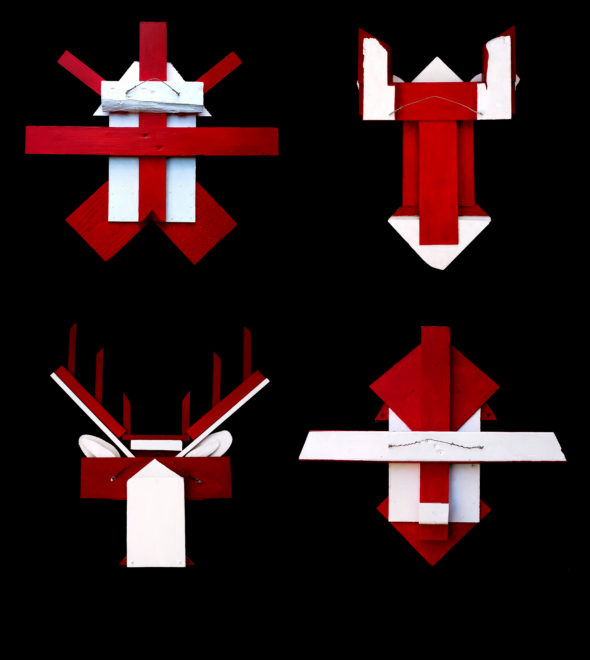
Fundamental Color Duo of Red and White:
This poster presents two recent assemblage sculptures from my “Ancestral Spaceship” series entitled “Temple Mound Space Travelers 1 & 2” and explains how the red and white painted backs of the series are culturally significant. Historically, in the southeast, the fundamental color duo of red and white was used to express dualities of many kinds, i.e. good-bad, pure-impure, order-disorder, chaos-harmony. Red was pervasively used to signify war and white to signify peace. Many examples survive of this red and white interplay on pottery in particular (two can be seen on the poster).

Medicine Wheel Philosophy:
The poster also shows how the general symbology connects back to the Mississippian era (900-1200 A.D.) and how it relates to medicine wheel philosophy. The medicine wheel embodies, in its design and conception, dualism and reciprocity where complementaries in all realms are not opposing but integrated; i.e. male-female, past-future, intuitive-analytical and so on.
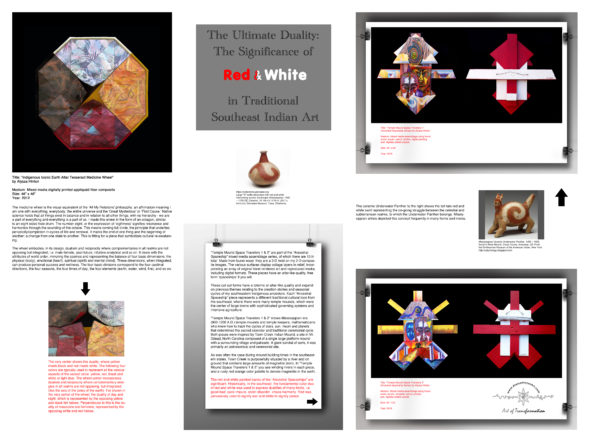
Town Creek Indian Mound:
Both “Temple Mound Space Travelers 1 & 2” were inspired by Town Creek Indian Mound, a site in Mt. Gilead, North Carolina composed of a single large platform mound with a surrounding village and palisade. A giant sundial of sorts, it was primarily an astronomical and ceremonial site.
Both show temple mounds and temple keepers, mathematicians who knew how to track the cycles of stars, sun, moon, and planets that determined the sacred calendar and traditional ceremonial cycle.

As was often the case during mound building times in the southeastern states, Town Creek is purposefully situated by a river and on ground that contains large amounts of magnetite (iron). In “Temple Mound- Space Travelers 1 & 2” you see winding rivers in each piece, and a rusty red-orange color palette to denote magnetite in the earth.
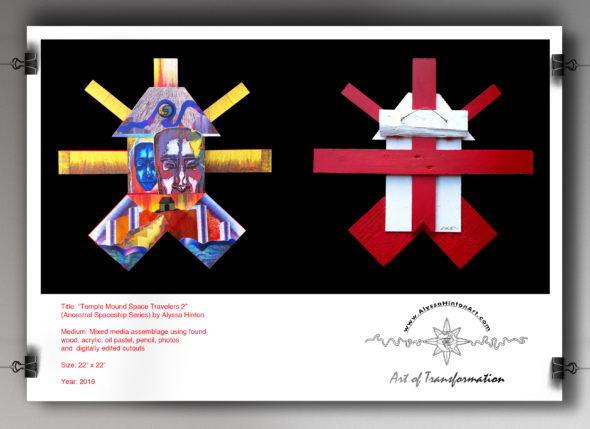
While at the conference, I had the pleasure of meeting and conversing with fellow poster presenter, Scot Hicks, Ph.D., professor of English at UNC Pembroke and director of the Teaching & Learning Center. His teaching encompasses African American literature, environmental literature and service learning. This is his poster on sustainability through service learning:
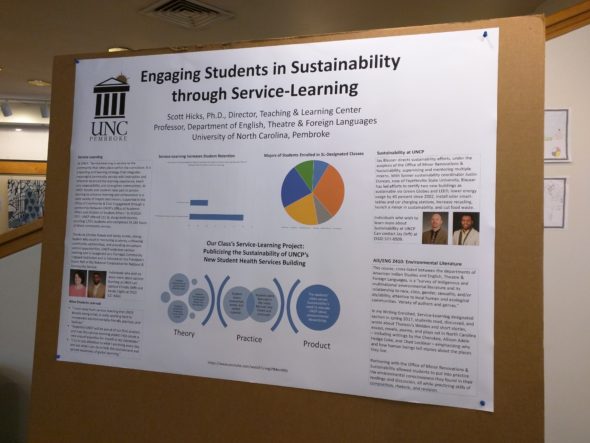
To the right (below) is a poster by Conner Sandefur, Ph.D. and Professor of Biology at UNC Pembroke, which investigates Lumber River microbial biodiversity:
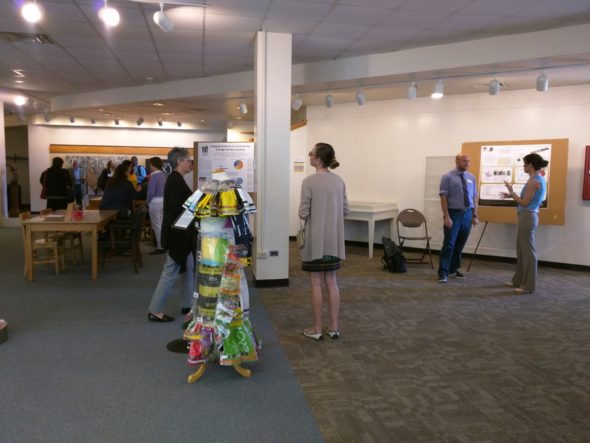
I created this tee shirt entitled “Duality” with the idea that I would print one up for the event, but it didn’t arrive in time. It’s based on a mixed media composite entitled “The Red & The White”, a portrait representing the untold journeys of the spiritual seeker who walks in balance within the duality of opposites represented by the red and the white.
These are actually available now on Fine Art America, so if you’d like to have one please click on the shirt below!

